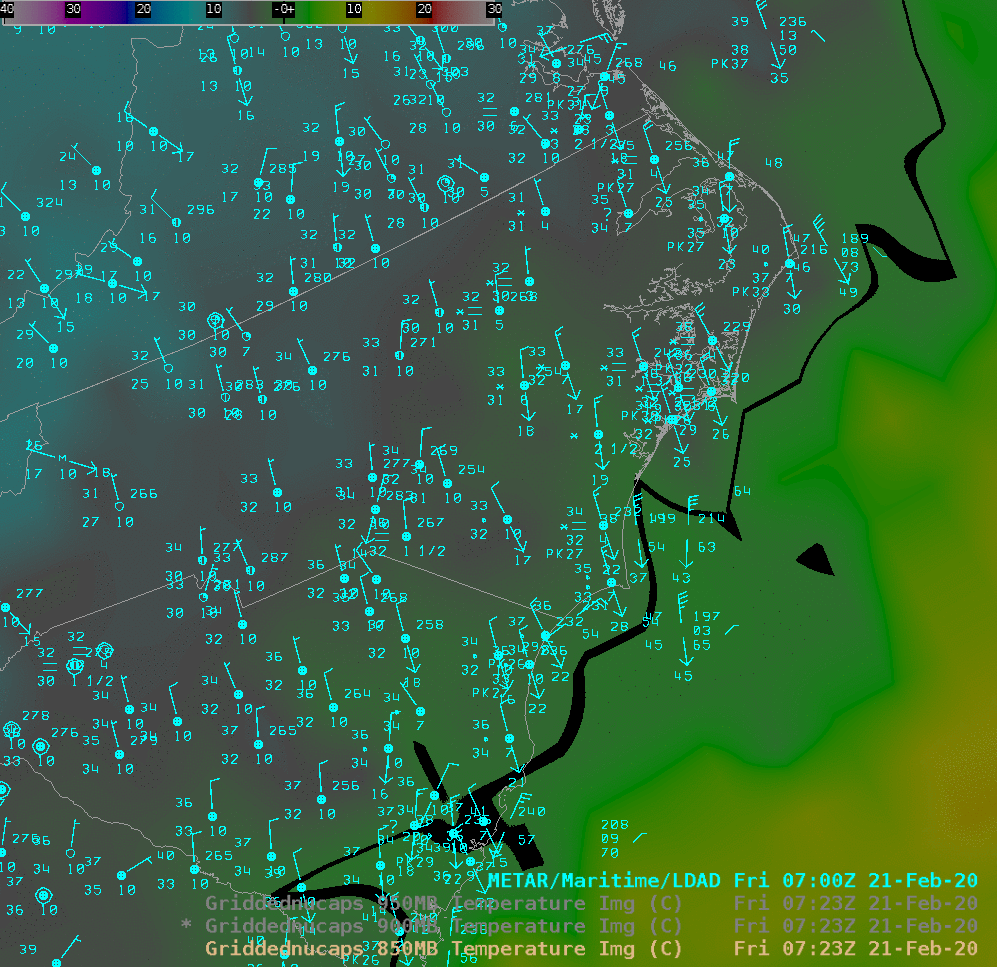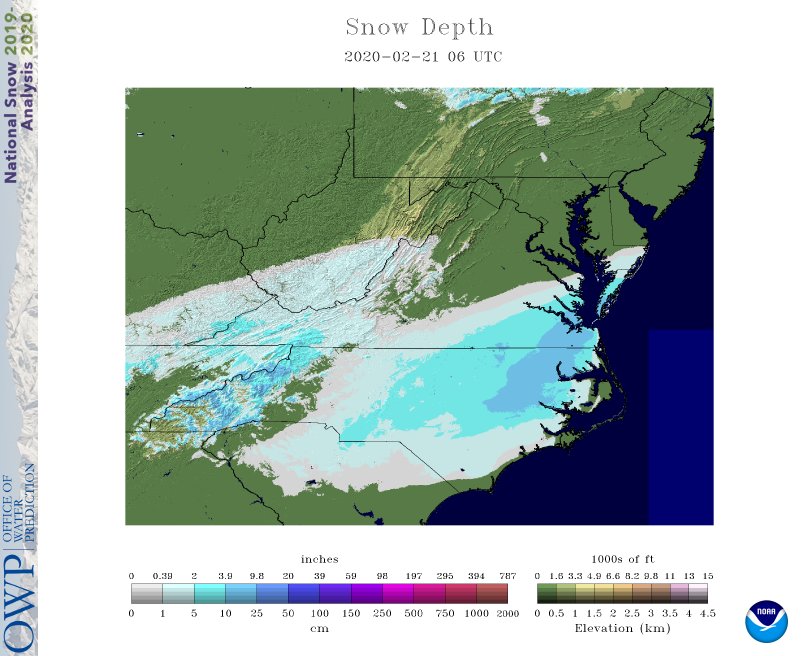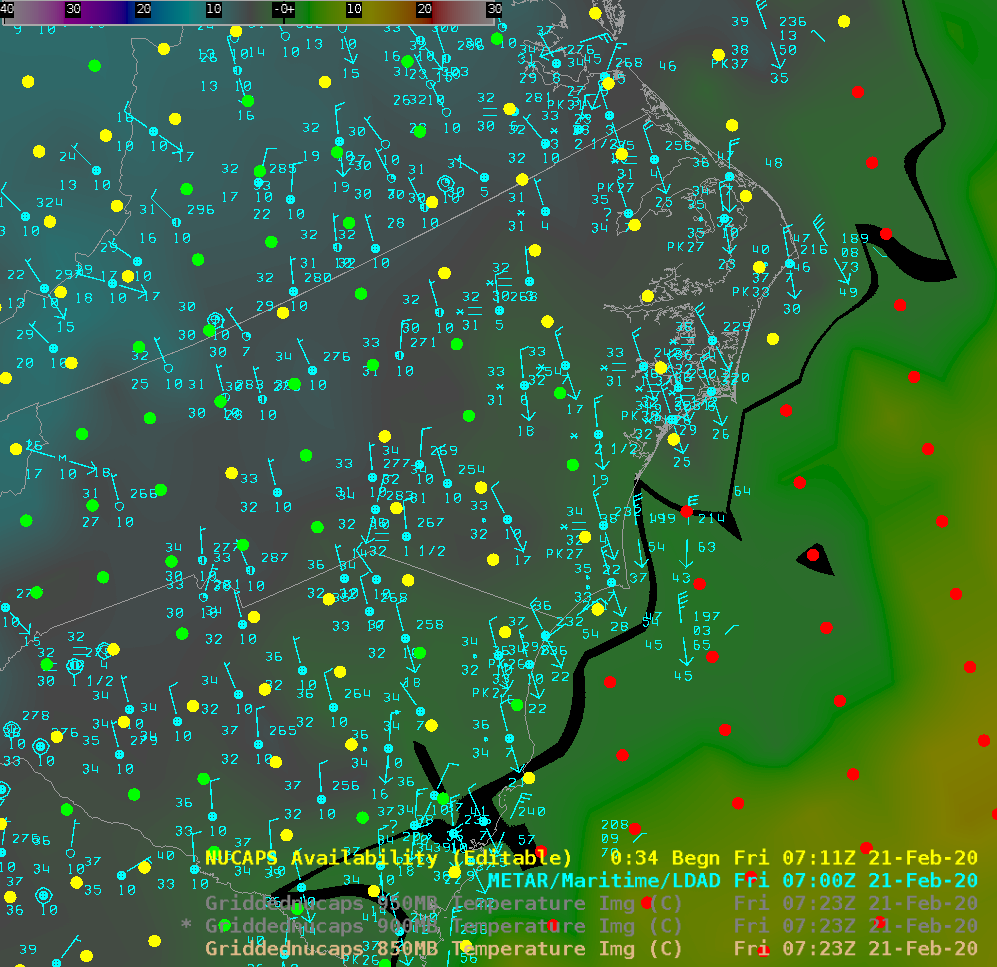Gridded NUCAPS over the southeast United States
Snow fell over the southeastern United States, principally North and South Carolina, late on 20 February/early on 21 February 2020. This blog post, one in a series, investigates how gridded NUCAPS thermal fields perform in analyzing the rain/snow line. The snow totals are shown above, an image that was taken from this website at the National Operational Hydrologic Remote Sensing Center (NOHRSC).
NOAA-20 overflew the Carolinas shortly after 0700 UTC on 21 February, and gridded values of 950-mb, 900-mb and 850-mb Temperatures are shown below. (Note how the 950-mb field intersects the ground at the western edge of the Piedmont). The 0º C isotherm at 850 and 900 mb is close to the coast; it is sub-freezing over most of the land at those levels. The analysis from 950-mb shows cold air stretching southwestward from southeastern Virginia, and that region is also where the accumulating snow was focused. This is an argument in favor of the temperature fields in NUCAPS giving useful information about the rain/snow line.

850-mb, 900-mb, and 950-mb analyses of temperature derived from NUCAPS vertical profiles of temperature, 0723 UTC on 21 February 2020. The same color enhancement is used for each level, spanning -40º C to 30º C; 0º C is highlighted by the black line (Click to enlarge)
One of the gridded NUCAPS fields available in AWIPS via the Product Browser (there are many!) is the binary probability of a temperature occurring. The 850-mb binary probability of 0º C is close to the coast, at 900-mb, just slightly inland. The 950-mb values also suggest cold air is more likely over the region where snow fell. There are also some embedded cold pockets at 950 mb over interior North/South Carolina.

Conditional Probability of 0 C at 850, 900 and 950 mb, 0723 UTC on 21 February 2020 (Click to enlarge)
Note that gridded NUCAPS fields include data from infrared retrievals, microwave-only retrievals, and from retrievals that do not converge. The gridding can mask behavior in the vertical profiles that might not necessarily engender confidence in a meteorological analyst. The plot below shows NUCAPS points (Green points are infrared retrievals that successfully converged, yellow points are microwave-only retrievals, and red points occur where the microwave-only and infrared retrievals failed to converge; this is typically where precipitation is falling) plotted on top of the 850-mb temperature analysis. Note, however, that values do show up everywhere! Users of the gridded data should keep in mind the quality of the data that goes into the analysis when they use it. Two vertical soundings from which gridded data are derived are shown at bottom. Users can decide if they would use those vertical soundings in isolation.




